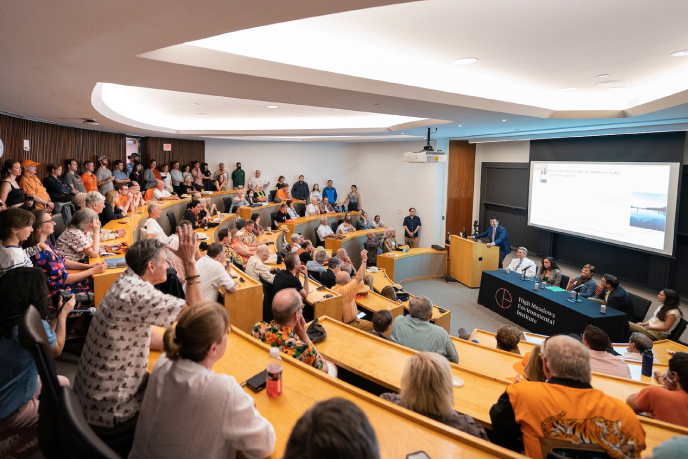Yuno Iwasaki ’23


Physics
Characterizing the Microphysics of Atmospheric Organic Aerosols Using Molecular Dynamics Simulations
Certificate(s): Computer Science
I investigated the thermodynamics of water in secondary organic aerosols (SOA), which form via reactions of precursor organic compounds emitted into the atmosphere. I focused on interactions between water and 2-methyl-threitol, a photooxidation product of isoprene. Isoprene is the most highly emitted non-methane hydrocarbon. Isoprene oxidation products condense less readily into aerosol particles due to their volatility, but low yields can still impact global SOA composition due to the magnitude of isoprene emission. I analyzed the dispersion of 2-methyl-threitol on the surface of water droplets using molecular dynamics (MD) simulations, a computer simulation of the movement of molecules. MD simulations are commonly used to study biophysical systems, but atmospheric aerosol research is a new application of MD and a new direction for the research group. Natural and anthropogenic atmospheric aerosols can have a net-cooling or net-warming effect, and also affect cloud formation and air quality. The exact mechanism remains poorly characterized, however, partly due to uncertainties in the behavior of liquid water in aerosol particles. Gaining a thorough understanding of atmospheric aerosols is critical to improving existing atmospheric models.
* This internship is connected to the HMEI Water and the Environment Grand Challenges project, “Microphysics of Water in Secondary Organic Aerosol.”
2020
Water and the Environment
Interfacial Water Group, Department of Civil and Environmental Engineering, Princeton University
Ian Bourg, Assistant Professor of Civil and Environmental Engineering and the High Meadows Environmental Institute; Xiaohan Li, Ph.D. candidate, Civil and Environmental Engineering



